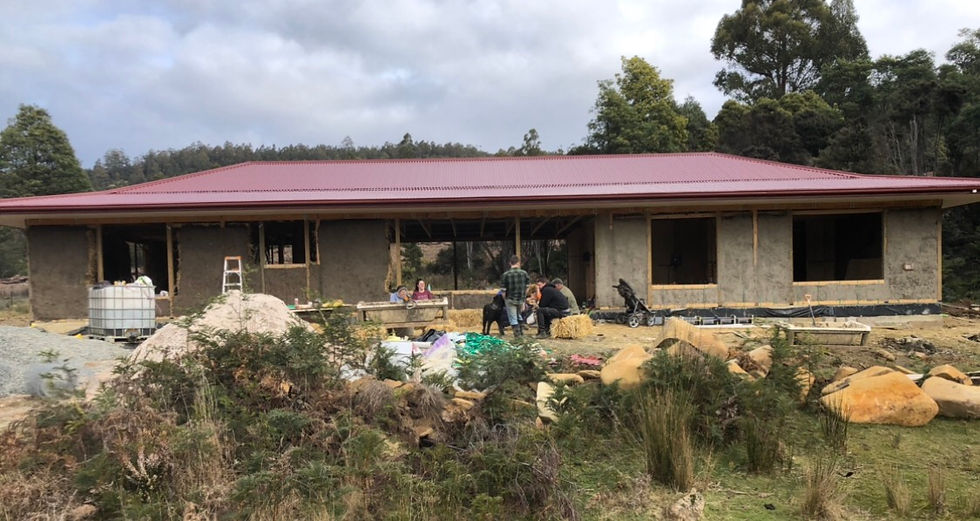Working Bee and Cob Window Bevels
- downesville

- Aug 14, 2020
- 2 min read
Updated: Jan 13, 2021
We invited our friends and relatives around to get muddy with us helping to get the straw bale walls coated in the first slip coat of earthen render more quickly.

The tree mulcher has gone on the blink, so we’ve taken it in for a service, but meanwhile we need straw to be cut for the render, so we pulled out the whipper-snipper we had used to trim stray tufts off the walls, and cut straw with it in a large plastic bucket. Slower than the tree chipper, but gets the job done.
We have changed plans at the window openings: in the first wall section we wrapped chicken wire around the posts, pinned it to the bales, and stuffed it with loose straw. We are not really satisfied with how they’re looking so we’re trying cob In that area instead. We have left the chicken wire along the outside space spanning the gap between post and bales, and we have driven some short sticks into the bales leaving their ends protruding into this triangle of space between the bale wall and the post which the window will attach to so when the cob dries around the sticks and the chicken wire, the cob window bevel and the bale walls will be connected.
Josh made these handy-dandy bevel-boxing from ply board and framing pine, with baling twine tying the open ends of ply to each other through the edge of the bale so the ply doesn’t bulge out too much when filled with cob.
The cob is just our render mix with uncut straw and less water. The excavator does a sufficient job mixing it up in a hole in the ground which saves some elbow grease.



Works pretty well. We left the form work in place for a couple of days so the cob could start to set, the untied and pulled out the baking twine, unscrewed the boxing from the post and it pulled easily away from the cob. There were gaps in the cob which we filled with render, blending it into the render already coating the main part of the walls. For the tall windows and door edges we will re-attach the form work higher and repeat the process to fill the bevel all the way to the top of wall height. I think we will be pulling out the straw-stuffed-chicken-wire window edges in our first section of wall and forming them at 45 degree cobbed bevels like these are.
*UPDATE* We have pulled out the first couple of window edges (Which was reassuringly difficult to do) and replaced them with bevels in cob, but as it is currently the middle of winter, the cob is taking a while to dry. This means that the odd remaining grains in the straw have been wet long enough to germinate and we have a small crop of wheat growing. The experts say these shoots can be snipped off, any roots left in the wall are of no concern, but you don’t want to pull the plant out at the risk of pulling render with it.




Comments